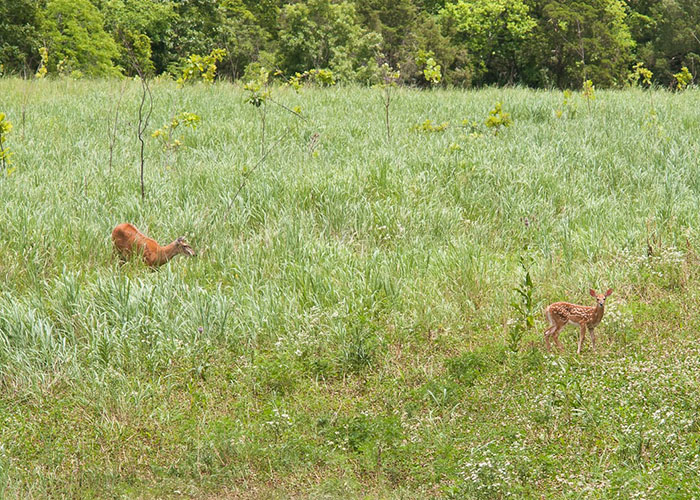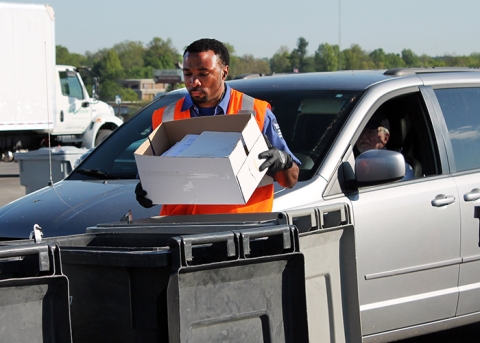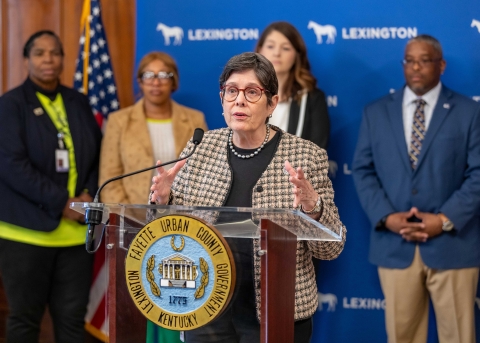
Last week on The Bluegrass in Your Backyard, we talked about succession and how it can help us naturalize parks (If you need a little refresher on disturbance, succession, and other important terms, head on over and check it out)! So now, let’s move from the hypothetical to the practical. Succession is just how the land changes as it ages, and in Kentucky the final, oldest stage of succession is a forest.
Of course, we don’t necessarily want every single one of our city parks to turn into a forest—so what’s the alternative? If you remembered disturbance from the last blog post, you’re correct! Disturbance such as mowers, cattle, bison, forest fires or windstorms can all be factors in preventing or slowing succession. If we’re being realistic, it’s most likely to be a mower in our city parks.
So let’s use a Bring Back the Bluegrass habitat for an example: prairies. At first glance, a prairie is just tall grass. In reality, the difference between a mowed lawn and a prairie is like the difference between a hoverboard and a Honda Civic—prairies are more complex, useful, practical, easier to maintain, and last longer. We’ll get under the hood (so to speak) of prairie ecosystems in a future blog post, but for today, let’s just think about how you’d create a prairie using disturbance.
The answer is pretty straightforward: mow infrequently enough to allow the grass to grow tall, but frequently enough to prevent trees and shrubs from sprouting. How often you mow depends on a lot of different factors. Prairies in this region of the US are usually mowed once every 2-3 years, usually in the early spring or late fall when there’s no risk of disturbing nesting birds or other baby animals. In Lexington’s naturalized parks—where we’re managing for wildlife and people both—mowing schedules may look a little different, but the end goal is the same.
Whether prairies or woodlands, other habitats we create in naturalized parks are managed in a similar way: with more or less disturbance to create different landscapes. In the next installment of the Bluegrass in Your Backyard, we’ll be talking about these habitats in more detail and how we plan to create them over time.



